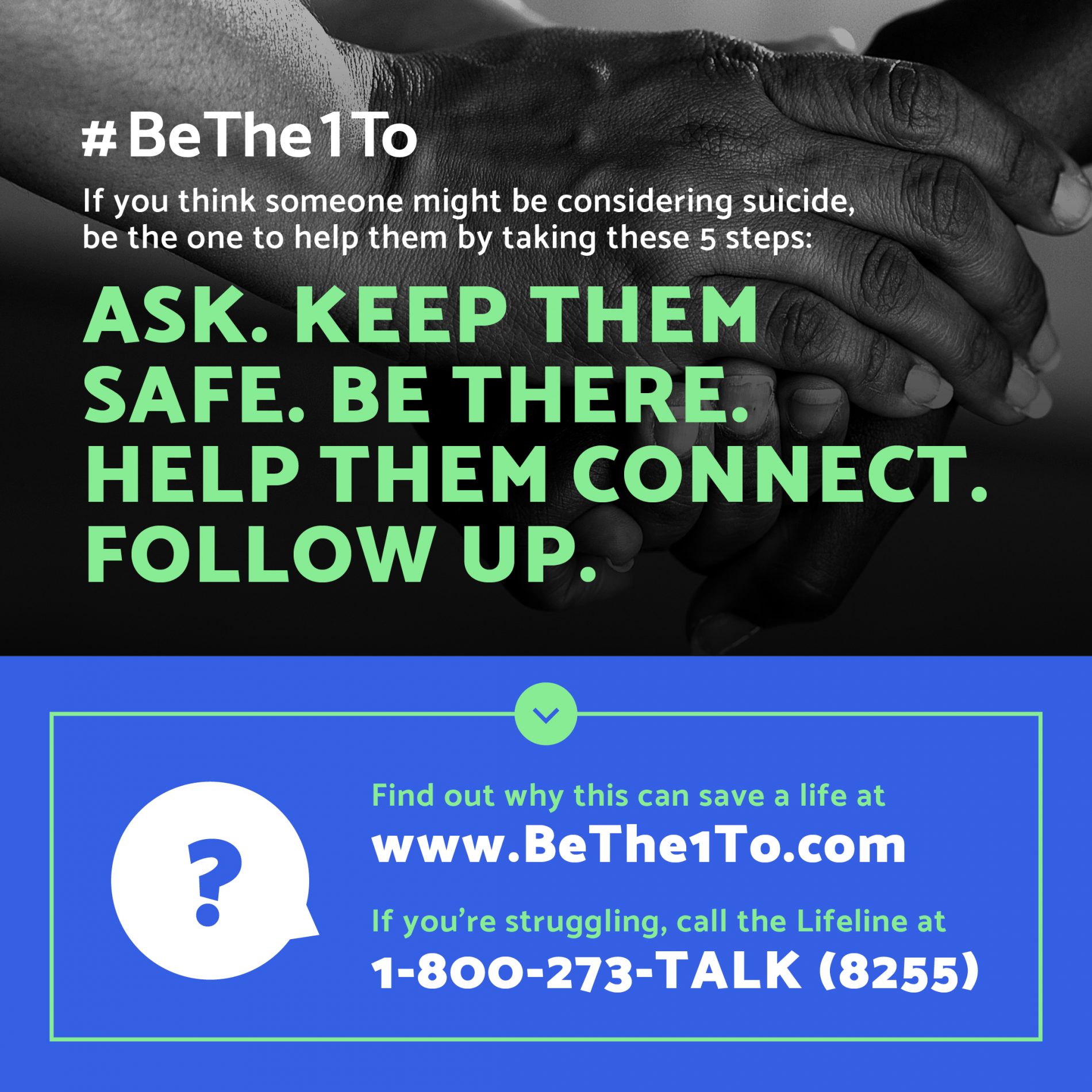Even though you will not see your loved one physically, you have the memory of them and how they filled and continue to influence your life. Celebrate that on their birthday.
Birthdays in Heaven
My son will be turning 25 soon. I believe people still age in heaven, at least chronologically. They no longer have a physical body, of course, but I think they still have a bodily form. I imagine they can choose whatever age they want to be for their heavenly body.
I shared with my loss survivor support group that we will be celebrating my son’s birthday with him. We will be physically apart from each other, but if he can sense us, I want him to know we are celebrating his life.
My son will always be a part of me, and he will be for many of you who knew him. I will forever think of him in the present, as that is how he is in my mind. Therefore, we continue to celebrate his birthday.
When you lose an essential person in your life, they are indelible. They are still present to us, in how they shaped us, and our memories of them.
Like most children, when he was young, his birthday was a big deal. When he was in grade school, we hosted parties with his friends and grandparents, mixed in with baseball. He played in a league from age four all through high school, and there were baseball games every week from April through July.


As he got older, celebrating his birthday with his friends was primary, as it should be. In place of playing ball, he went to watch the MN Twins at the new TCF Bank Stadium. My son still made time for us to celebrate with him as a family. Our celebration with him usually focused on a family dinner. His dad would grill, and we would dine alfresco on the patio surrounded by the blooming spring flowers.
He was only food possessive with a few favorites, his birthday cake, cookies and cream ice cream from Sebastian Joes and Dad's grilled turkey burgers.
I always made a cake from scratch, his favorite that became a tradition was banana cake with milk chocolate and peanut butter frosting; recipe also in my blog. He was only food possessive with a few favorites, and this was one of them. He would take the leftovers back with him, to his apartment. If we did not have cake, we would head to our favorite house-made ice cream shop where he would usually order cookies and cream.
I think of my son almost every minute of every day. I miss his voice and his hugs, his humor, and the time together as we stood in the kitchen around the center island, as he shared with me the things he newly discovered from podcasts he listened to, news read, and videos watched. Pop news and talk shows are covering the latest excitement of a movie series my son often talked about.
My son is an avid fan of Marvel. The timing of his birthday since he died has aligned with the release of the Marvel Avenger series. He and my daughter would theorize over the Marvel movie plots, the development of the characters, and their favorite scenes. They had the opportunity to debate about the “Avengers: Infinity War”, before his death.
Marvel released this week the second in a series of the Avenger plot. I will miss seeing my two adult children express their excitement and anticipation about this release.
So now my birthday wishes for my son, that involves you, to honor the things he loved to do on his birthday
When hearing the sound of a baseball connecting with a metal bat, think of him.
When you are in the stands of a major league baseball game with your family or friends, look to the outfield and think of him.
When you go to the opening of a new Marvel movie, think of him.
When you hear a song from any of his music playlists, think of him.
When you are on the dance floor, think of him.
When you are out with a bunch of your friends, think of him.
Lastly, enjoy a piece of chocolate cake or bowl of cookies and cream ice cream, and think of him.
Even though you will not see your loved one physically, you have the memory of them and how they filled and continue to influence your life. Celebrate that on their birthday.
My son will always be a part of my present and future life. I carry him with me, as I live out mine.
When you lose an essential person in your life, they are indelible. They are still present to us, in how they shaped us, and our memories of them. In thinking of them, we may laugh, we may cry from sadness, at times feel like our hearts and minds have been ripped out of our bodies because they left. But, they will always be a part of you. My son will always be a part of me.
Happy 25th Birthday Baby



This is my son’s favorite birthday cake. It became a birthday tradition. Accompany this rich cake with a big glass of milk. The banana cake is light; paring with peanut butter in the frosting makes it a decadent cake.
I originally found this recipe from marthastewart.com.
Banana Cake
Ingredients
- 8 tablespoons (1 stick) unsalted butter, room temperature, plus more for coating pans
- 2 1/2 cups sifted cake flour (not self-rising), plus more for dusting
- 3/4 teaspoons baking soda
- 1/2 teaspoon baking powder
- 1/2 teaspoon salt
- 1 cup pureed ripe bananas (about 3)
- 1 teaspoon pur vanilla extract
- 1/4 buttermilk
- 2 tablespoons pure vegetable shortening
- 1 1/2 cups superfine sugar
- 3 large eggs, lightly beaten
- Milk Chocolate Peanut Butter Frosting (recipe follows)
Instructions
- Preheat the oven to 350°. Butter two 8-by-2inch round cake pans, and line bottomes with parchment paper. Dust the bottom and sides with flour; tap ou any excess. Set aside.
- Sift together four, baking soda, baking powder, and salt into a large bowl; reserve. In a medium bowl, combine banans, vanilla extract, and buttermilk; stir to combine. Set aside.
- In a bowl of a heavy-duty mixer fitted with the paddle attachment, combine butter and shortening. Beat on medium speed until creamy, about 1 minute. Gradually add sugar, beating until light and fluffy, about 3 minutes. Using a rubber spatula, scrape down sides of a bowl as necessary. Reduce mixer speed to low; drizzle in eggs, mixing until batter is no longer slick, about 2 minutes. Slowly add reserved flour mixture to egg mixture, alternating with banana mixture, a little of each at a time, starting and ending with flour. Scrap down side of bowl.
Divide batter evenly between prepared pans. Bake until light golden brown and a cake tester inserted into the center of each cake comes out clean, 35 to 40 minutes.
Transfer pans to a wire rank to cool, about 15 minutes. Invert pans to remove cakes; return cakes to wire rack, top side up, to cool completely.
To assemble cake, remove parchment paper from bottoms of cake. Using a serrated knife, slice each layer in half horizontally. Place one sliced layer, cut side up, on an 8-inch cake round. Spread with 2/3 cup of frosting. Repeat this process, stacking the second and third layers on the first. Place fourth layer on top, cut side down. Frost outside of cake with remaining frosting. Transfer cake to a serving plate. Serve at room temperature.
Milk Chocolate Peanut Butter Frosting
- 1 pound milk chocolate, finely chopped
- 8 tablespoons (1 stick) unsalted butter, cut into small pieces
- 1 1/2 cups smooth peanut butter
- 2 tablespoons milk
- Prepare an ice bath. Melt chocolate in a medium heat-proof bowl set over a pot simmering water. Remove from heat, add butter, and whisk until melted. Add peanut butter and milk, whisk to combine.
- Place frosting over ice bath, and whisk until it reaches a spreading consistency. Use immediately.
If the frosting becomes too thick, place over a pot of simmering water for a few seconds, and whisk until smooth.
Being suicidal is not a blip. The contributors to the podcast I listened to shared, suicidal thoughts are a constant in the back of their minds.
I found a podcast episode on the topic of suicide. It is a raw, truthful episode of people who have been suicidal, sharing their stories of what it is like to live with this state of mind, and what has helped them to keep living. They shared, being suicidal is not a blip. They always have these thoughts in the back of their mind. They were just fortunate to find a will to live, to get through that moment of action, to stay alive.
I listened to the podcast because I wanted to walk in my son's shoes to understand what he was experiencing and feeling because of his illness.
So, how do some make it through that moment? I became aware of mental illness symptoms and what makes someone suicidal after my son died. Unfortunately, it is too late for me to help my son. I have tremendous guilt associated with not knowing his mental state. I was not there to help him through it. Yet, I want to walk in his shoes to understand what he was experiencing and feeling with his illness. None us knew he was suicidal. He consoled others who were struggling through life, but he never shared his state of mind.
As hard as it is to listen to, I felt more connected to my son and perhaps he knows I understand a little more and I do not judge him.
That is why I sought this podcast out. With my computer I hid in the back room, cleaning, away from my husband. I already exposed his once to a live version of an episode from the podcast. Once was enough for him. He tries to make everything better, and listening would not change the outcome.
As I am listening, tears streamed down my face and sunk to the floor. I could not stop listening though, because I wanted to know what it was like for him and why he kept this secret from all of us. I wondered if he knew he was suicidal or was it heightened by the use drugs.
I took what I heard and related it back to conversations and events my husband and I had with our son. I continually replayed his life and drew connections. As hard as it is to listen to, I felt more connected to my son and perhaps he knows I understand a little more and I do not judge him.
He is Not Alone - My son's life is more than his death. It is just how he died. But many are dying, and diagnosis of a mental health condition is not a prerequisite.
You see, my son’s life is more than his death. It is just how he died. But many are dying, and diagnosis of a mental health condition is not a prerequisite.
The air date of the podcast episode was September 2018 shortly after the CDC released the latest statistics on suicide rates in the US. The rates increased in every state but one, ranging between 6% and 58%. Twenty-five states had suicide rates increase of over 30% between 1999 and 2016. According to the CDC, it is a large and growing health problem. It is the 10th leading cause of death in the US and the second leading cause of death for people 10 to 34 years of age.
You Can #BeThe1To Save a Life - Prevent suicide from happening by walking in the shoes of someone who may be like you and learn there is hope. Learn how you can help someone struggling.
This is why I encourage you to listen to this podcast, “Terrible Thanks for Asking,” episode 49, “What do you Say about Suicide.”
- You may be with someone who is struggling and you will learn how to save a life.
- You may be struggling yourself. By listening, you will know you are not alone, and there is potential for getting better.
They reference BeThe1to.com, five steps to help someone through a crisis. In case you do not listen to the podcast, I am sharing the hosts and contributors’ thoughts that resonated with me about each step. The contributors’ emotional stories leave you to tears but give you hope. It will require strength to make it better for yourself and for others.
If you are a male, you really need to listen or continue reading. Something is not in your favor resulting in higher death rates.
After reflecting on the stories as I lay awake at 3:00 am (a common nightly event these days), I noticed all of the contributors to the podcast episode are women except one male. Why do males not confide intimate things about themselves? This is a problem. According to the CDC, more males die from suicide; without a known mental health condition, 84% were males, with a mental health condition 69%, were males.
If you are a male, you really need to listen or continue reading this post.
BeThe1To and this podcast have structured stories of hope and recovery summarized into 5 helpful steps to get through a crisis, to live another day, to live a mental well life.
The 5 step information comes from BeThe1To resource kit.
Ask the Tough Question
When somebody you know is in emotional pain, ask them directly: “Are you thinking about killing yourself?”
Just ask; bring it up; talk about it up. Mentioning suicide is not a trigger but opens up the door for a conversation without judgment. Listen and try to understand. Tell them, “There is no shame asking for help.” Create a shame-free space. Accept them as they are and where they are.

Keep Them Safe
Is your friend or loved one thinking about suicide?
Ask if they’ve thought about how they would do it and separate them from anything they could use to hurt themselves.
Do they have an action? Put distance between the plan and the actions. Check in on them at the right time. For those who did succeed, the sick part got lucky and got what it wanted.

Be There for Them
Be the person willing to sit with them and not run from their pain. The stakes are high to be there to help a person who is struggling with their mental health.
Really be there for them, and listen. You do not need to solve it. Do not give your friend or loved one a to-do list to get over it. Tell them that you care. You can get past this.
Tell them, It does not define you, “You are more significant than this. You are so much more than how you are feeling right now. The pain is not permanent. This is not stronger than you are.”

Help Them Connect
Find the support that creates a safety net. De-stigmatize the getting better journey. Be with people who will talk you into living. Connect them with those who can help to live a mentally healthy life.
Help your loved one or friend connect to a support system, whether it’s 800-273- TALK(8255), family, friends, clergy, coaches, co-workers or therapists, so they have a network to reach out to for help.

Follow Up
Check in with the person you care about regularly.
Making contact with a friend in the days and weeks after a crisis can make a difference in keeping them alive.
Suicide thoughts are not just a one-time. It is not a thing that you get over. Let them know it is okay to be vulnerable and that they can be sad. Just be present. Give them a reason not to die to get through the moment when they are ready to take action.
Talk About It
After listening, you may be moved and perhaps drained. But talking about it does help come to grips that mental health struggles are real to us. It may help you digest what people are going through and how to survive.
My therapist also shared another useful resource, the National Alliance on Mental Illness (NAMI). They provide a wealth of easy reading resource guides on mental illness, ways you can get involved, where to get help, and how to live mentally healthy.
References
“How The 5 Steps Can Help Someone Who Is Suicidal.” #BeThe1To, <www.bethe1to.com/bethe1to-steps-evidence/>.
Mcinery, Nora. “Terrible, Thanks for Asking®.” APM Podcasts, Infinite Guest, 2 Apr. 2019, <www.apmpodcasts.org/ttfa/>.
NAMI – <https://www.nami.org/#>
“Preventing Suicide |Violence Prevention|Injury Center|CDC.” Centers for Disease Control and Prevention, Centers for Disease Control and Prevention, 29 Sept. 2018, <www.cdc.gov/violenceprevention/suicide/fastfact.html>.
“Suicide Rates Rising across the U.S. | CDC Online Newsroom | CDC.” Centers for Disease Control and Prevention, Centers for Disease Control and Prevention, 7 June 2018, <www.cdc.gov/media/releases/2018/p0607-suicide-prevention.html>.
I find I can laugh and cry in the same instance and I am okay with this
The audience is thriving for a human connection through storytelling on topics of real life, that not always have a happy ending. I was there to connect with a story like mine, not a happy ending.
Streaming into the theater was an audience of women; about 1 out of every 100 women was a male, all mostly between the ages of 20 and 30 something (based on my visual perception).
My husband kindly was my date. I understand why the audience was mainly women, but why not more in their forties or fifties, the people who are more likely to have gone through a tragic life event.
I met my husband at our seats, he was there before me, because the line for the women’s bathroom was about fifty deep. He told me he had a strange encounter in the men’s bathroom. He had to share it with women walking in while he was at the urinal. Laughing he said, “I had to convince myself that I could use the urinal. The women said they were married, but still, it is hard to pee when someone may be glancing over walking through to the stall.”
The show featured the host of a podcast where guests tell their personal stories of shattering life events, bringing the audience in on their emotional journey of realism. The host was launching a book tour of her newly published book, and this was the start of it.
"Terrible Thanks for Asking" on stage was humanistic storytelling inviting the audience into live of others.
To bring you into the setting, this is the description of the show, posted on the theater’s website,
“ Terrible, Thanks for Asking LIVE is a spectacular, theatrical presentation of the podcast with live music and multimedia storytelling of an unpublished episode. On-stage narration from Nora, audio clips and beautiful, bold visuals bring the audience through the signature Terrible, Thanks for Asking emotional journey….. You’ll laugh, you’ll cry, and you won’t want to miss the human connection.”
Why do people find emotional stories entertaining; perhaps a connection, personal reflection, or appreciation?
The event was sold out. I wondered, why would all of these young people want to be here?
Does it help them experience emotional issues, trauma, and adversity from a safe distance, getting a glimpse into the lives of others sharing their stories? Storytelling is an art that brings the audience into their lives. Humans are social, and this storyteller is effective in connecting with the audience.
Perhaps, they could be dealing with something terrible too, the loss of a close family member, or are suffering from an illness, or someone close to them is suffering (e.g., mental illness, addiction, cancer, heart disease, congenital condition, etc.).
Maybe they lost someone to suicide. After all, it is the 2nd leading cause of death for ages 15-34 (third is homicide, and the first is by accident), (Stibich, Mark Ph.D., 2019). An American dies by suicide every 11.69 minutes (afsp.org/StateFacts).
I need to connect with people like me who know what it is like to go through something terrible.
Another theory is the audience is thriving for humanistic storytelling on what really matters in life and to get away from crazy realities that are front and center in the national news.
I was there because I need to connect with people like me, who are also suffering from something catastrophic. The podcast host, Nora McInerny, is a widow and openly talks about her journey.
While her grief and journey are different than mine (she lost a spouse, and I lost my son), points of our grieving experience are the same. What she shares, having knowledge gained from experience is, life continues, taking your loved one with you.
My experience is only one year into my life without my son, but this is what I have learned.
I am Fine, Not Really – Nora also captures this one. When you ask how I am doing, my response of fine is a deflection. My son is still dead. Why would I be okay? The reason I respond fine depends on the circumstances around the question. The question, “How are you?” has become a standard greeting. Most recipients do not expect you to answer. Pause for a second and the person will move on to the purpose of their engagement. If you know me, I understand your question is sincere, but I am too tired to respond and after all, you already know how I am.

I Do Not Need Your Help, but I Appreciate When You Do – People want to help carry your grief. They want to do anything to make it better. I cannot tell you how to help me, but when you do something, even the simplest of gestures, it does help. Being here for my husband, daughter, and me is a gift. And because grief is lifelong, do not go away after the first ninety days.
Grief is not something a person overcomes, like an illness, it is lifelong. It does not get easier after going through the first year milestones. So far, the second year is hard too. I replay memories of his death and the milestones, and the realization he is not coming back starts to set in. Each person’s grief is their own, but grief is not linear, it is more of an undefined scribble.
I Am on an Emotional Rollercoaster- I find I can laugh and cry in the same instance and I am okay with this.
I will always want to talk about my son, even if doing so makes me cry. Being human is having emotions. I am okay showing them, and you should be okay seeing them. My voice will quiver when I advocate for change. The alternative is not to advocate. If you are asking for volunteers, you decide if you want my help.
I Am Brave – I applaud myself for leaving my house. It is hard to get the courage to engage with people. I hate small talk, always have, and even more so now. I can talk about subjects relevant to me or interject when I have an opinion, but talking is not a favorite pass-time. I had a hard time doing small talk before, and I am okay not doing it now.
Keeping His Memory Alive is Important – I need to talk about my son. I need to say his name and tell stories to keep his memory alive. I need you to do the same.
It is okay not to be okay; there are others not okay too.
Emotional stories take you on roller coaster of lows and highs, leaving you inspired. This is the point where I should be inspirational or funny.
Here is the inspiration – If you are grieving or going through some emotional event, you are not alone because there are people out there too who are not fine, and it is okay not to be okay. It is extremely important to find one person or therapist to share what you are emotionally going through.
If you are on the receiving end of someone you think is going through a crisis or a set-back, regardless of size, don’t shy away and think it will pass. Be there for them.
Now the funny part, I curse more, and sometimes I swear and use the name of God in the same sentence. If this shocks you, I am okay with that too. I know this is not funny, but I am not a comedian. To get your fix, I recommend watching The Daily Show with host Trevor Noah.
References
Stibich, Mark. “Top 10 Causes of Death for Ages 15 to 24.” Verywell Health, <www.verywellhealth.com/top-causes-of-death-for-ages-15-24-2223960>.







